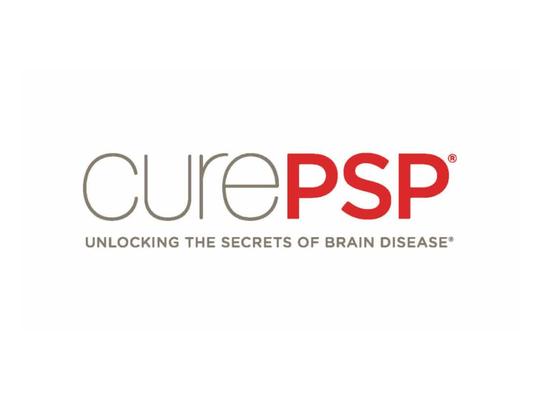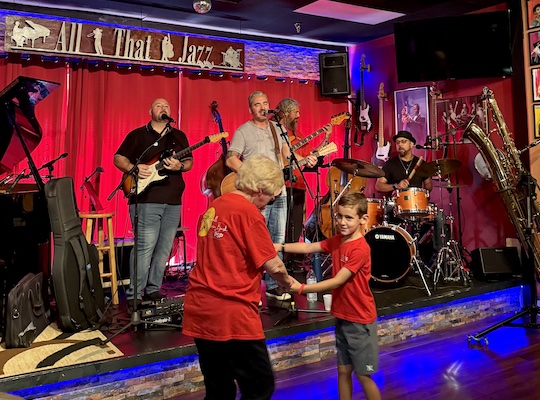UCSF-Led Platform Trial Offers New Hope for PSP Patients with Innovative Multi-Drug Approach
Jan 14, 2025 Oscar Sullivan
New opportunities are emerging for patients with progressive supranuclear palsy (PSP). CurePSP is partnering with the University of California San Francisco (UCSF), a CurePSP Center of Care, on a new platform clinical trial that will test three drugs concurrently, and could include more, bringing new hope for patients with PSP. The trial is made possible by a five-year grant of up to $75.4 million from the National Institute on Aging (NIA), which is part of the National Institutes of Health (NIH). Researchers hope the trial, which will be led by UCSF and conducted at up to 50 sites nationwide, including many CurePSP Centers of Care, will lead to productive partnership with those, in academia and in industry, that are focusing on the development of new therapies.
CurePSP is a key partner in the trial, contributing to the leadership team of the project and ensuring that the patient perspective will be integrated into the trial. The organization will take part in the participant recruitment and retention task force and will ensure that the patient’s voice is represented throughout the course of the project. The four individuals on the steering committee are Adam Boxer (UCSF), Julio Rojas-Martinez (UCSF), Anne-Marie Wills (MGH), and Irene Litvan (UCSD), who are also key leaders at the Center of Care. Kristophe Diaz, executive director and chief science officer at CurePSP, is an advisor of the project. Dr. Boxer says that patients have been integral to this project since the start, as the model began with a “Compound Selection Committee” that consisted of clinicians, basic scientists and a patient to vote on which drugs would be tested first. As the project advances, they will establish a “Participant Advisory Board” that will include participants and their family members who will provide “important feedback” on the design and operation of a given trial. CurePSP will also be collaborating with UCSF and other trial sites to recruit participants.
Families often ask how they can help in developing new treatments, says Dr. Diaz, but the most he has been able to offer is guidance on building a support network and care team for managing the shifting symptoms. CurePSP is proud to now offer community members an actionable initiative that marks a pivotal step forward in bringing renewed hope to patients and families. This platform trial is more than just a trial; it is a model that seeks to accelerate the pace at which new ideas can be tested. Each attempt will further develop the understanding of PSP and hopefully discover therapeutics that will help enrolled patients.
The three drugs will be tested using an innovative platform clinical trial model that is based on Massachusetts General Hospital’s HEALY ALS Platform Trial. ALS has only recently seen breakthroughs in research that are now leading to a pipeline of promising therapeutics. Platform trials are trials where multiple drugs are tested at the same time, using specialized statistical tools. New regimens (drugs) can be added as they become available thereby decreasing or eliminating the gap in time from identification of a rationale therapy to testing. Thus, the focus is on the disease, rather than any individual experimental agent, and the platform remains open long-term until successful cures are found. This sort of model will give researchers more attempts at developing therapies while also expanding the global database of findings, as data, imaging and biospecimens from the trial will be shared with PSP researchers worldwide.
The PSP clinical trial platform offers a unique opportunity for patients, with 75% of participants receiving an active drug. After one year, all participants will have access to the drug, providing hope for those battling this progressive disease. The innovative design of this model reduces the number of participants receiving a placebo, meaning more patients can access potentially active treatments as the trial will be testing multiple drugs to the one placebo rather than a one-to-one ratio.
“You have the same statistical power, but you need fewer placebo patients in the trial,” said Dr. Boxer. “That's good for patients because many patients and families really want to be on the active treatment, so they find that very attractive.”
The trial is designed to be adaptable, allowing researchers to continually test new drugs if initial ones prove ineffective. Experts believe that even a modest modification in disease progression, by as little as 20% or 30%, could make a significant difference for patients facing the relentless advancement of PSP. A key goal of the study is to enroll a diverse population, particularly those underrepresented in clinical trials. The team is committed to community engagement, including Spanish-speaking communities, where participants will be served by Spanish-speaking clinicians and neuropsychologists. Similar efforts will extend to African American and other medically underserved populations, ensuring inclusivity and broad representation in the study.
Dr. Boxer hopes that the trial will move PSP closer towards the recognition of a disease like ALS, which has received significant financial investments from drug companies due to increased awareness and the belief that these trials will be profitable investments.
“Most people have never heard of PSP, and that sentiment affects a lot of these companies as well,” Dr. Boxer said. “If we provide a mechanism by which a company can easily test a drug for PSP that's hopefully less expensive and operationally much less complicated than if they were to do it on their own, then that would hopefully make developing a treatment for PSP look more appealing.”
Enrollment for the platform trial is expected to start in fall 2025. CurePSP will share more details with our community as the trial nears recruitment. The trial will be open to patients with Richardson’s syndrome, which affects about 70% of patients with PSP. These patients must have had progressive symptoms for fewer than five years and be accompanied by a care partner.
Join our email list
Get the latest news and resources
directly to your inbox.
Get the latest news and resources directly to your inbox.
Sign Up



